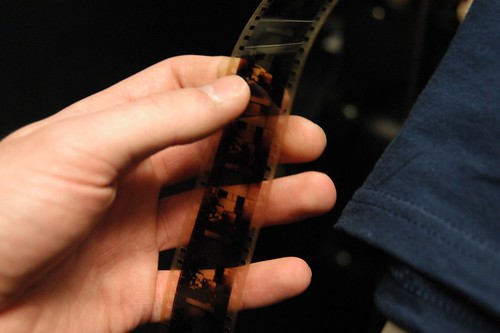
Notes
The following material is from Wikipedia.
Saving Private Ryan (1998) dir. Steven Spielberg
Shot on beach in Ireland. Brought feeling to make us feel like we are there.
Three Colors: Blue (1993) dir. Krzysztof Kieślowski
using cinema with white light on screens for empathy.
Casablanca (1942) dir. Michael Curtiz
Highlights in eyes to draw attention. Too romantic to be classical.
The Record of a Tenement Gentleman (1947) dir. Yasujirō Ozu
Hollywood isn’t classical, Japan is.
Odd Man Out (1947) dir. Carol Reed
Looks at bubbles in spilled drink.
Two or Three Things I Know About Her (1967) dir. Jean-Luc Godard
A character is in trouble, bubbles in spilled drink.
Taxi Driver (1976) dir. Martin Scorsese
Looking into bubbles to see troubles.
The French Connection (1971) dir. William Friedkin
Car chasing train. Excitement through sound of tires.
1895-1918: The World Discovers a New Art Form or Birth of the Cinema
Traffic Crossing Leeds Bridge (1888) dir. Louis Le Prince
The Kiss (1896 film) (a.k.a. May Irwin Kiss) (1896) dir. William Heise
Workers Leaving the Lumière Factory (1895) dir. Louis Lumière
Short documentary of everyday life.
Arrival of a Train at La Ciotat (1896) dir. Louis Lumière
Audience felt the train was coming at them.
Annabelle Serpentine Dance (1894-1896 ?) dir. William Kennedy Dickson or William
Make people want to be a princess or hero or cowboy.
Sandow (1894) dir. William Kennedy Dickson
What Happened on Twenty-third Street, New York City (1901) dir. George S. Fleming and Edwin S. Porter
Give an image to flip through in heads.
Cendrillon (1899) dir. Georges Méliès
Made people seem to appear.
Le voyage dans la lune (1902) dir. Georges Méliès
First special effects.
La lune à un mètre (1898) dir. Georges Méliès
The Kiss in the Tunnel (1899) dir. George Albert Smith
Ghostly effect from filming on train.
Shoah (1985) dir. Claude Lanzmann
Shots from train making it very serious.
2001: A Space Odyssey (1968) dir. Stanley Kubrick
Phantom ride to go through colored light. Outer body experience.
The Sick Kitten (1903) dir. George Albert Smith
Close up to show cat eating.
October: Ten Days That Shook the World (1928) dir. Sergei Eisenstein
Close up to give sense of movement and tragedy with dead women.
Once Upon a Time in the West (1968) dir. Sergio Leone
Close up to understand he found the murderer.
The Corbett-Fitzsimmons Fight (1897) dir. Enoch J. Rector
Different size of film to show more action.
1903-1918: The Thrill Becomes Story or The Hollywood Dream
Life of an American Fireman (1903) dir. Edwin S. Porter
Street action is shown then the same action from inside.
Sherlock Jr. (1924) dir. Buster Keaton
Double exposure to show dream. A cut is then used.
The Horse that Bolted (1907) dir. Charles Pathé
Left horse on street, man climbs stairs, horse is eating food, cuts to man, cut to horse. Here it shows parallel editing.
The Assassination of the Duke of Guise (a.k.a. The Assassination of the Duc de Guise) (1908) dir. Charles le Bargy and André Calmettes
Showed back to camera, hen showed reverse angle shot.
Vivre sa vie (1962) dir. Jean-Luc Godard
No one knew actors, not even their name.
Those Awful Hats (1909) dir. D. W. Griffith
Actress known, but knew nothing else about her.
The Mended Lute (1909) dir. D. W. Griffith
Actress said was dead, but showed up again in this movie.
The Abyss (1910) dir. Urban Gad
Actress became famous. She was more sexual.
Stage Struck (1925) dir. Allan Dwan
showed costumes and added luxury.
The Mysterious X (1914) dir. Benjamin Christensen
Cross cutting. A dream caught on film.
Häxan (1922) dir. Benjamin Christensen
Multiple light sources, complex film.
Ingeborg Holm (1913) dir. Victor Sjöström
Naturalism and grace.
The Phantom Carriage (1921) dir. Victor Sjöström
multilayer film. Many moods and stories.
Shanghai Express (1932) dir. Josef von Sternberg
Youth and glamor.
The Story of the Kelly Gang (1906) dir. Charles Tait
First feature length movie.
The Squaw Man (1914) dir. Oscar Apfel and Cecil B. DeMille
First Hollywood movie. Eyes matched to add emotion. Broke 180 degree rule.
The Empire Strikes Back (1980) dir. Irvin Kershner
Followed rule to add effect.
Falling Leaves (1912) dir. Alice Guy-Blaché
Added movements to create story. Tied leaves on trees.
Suspense (1913) dir. Phillips Smalley and Lois Weber
Split screen to show all 3 people at same time. mirror shot.
The Wind (1928) dir. Victor Sjöström
Wind seems to blast imagine. Acted like thriller but felt like a dream.
Rescued from an Eagle’s Nest (1908) dir. J. Searle Dawley
Painted skyline.
The House with Closed Shutters (1910) dir. D. W. Griffith
Film needed to match the outside world. Natural details like wind in trees.
Way Down East (1920) dir. D. W. Griffith
Orphans of the Storm (1921) dir. D. W. Griffith
Visual softness and backlit to give hallow to hair.
The Birth of a Nation (1915) dir. D. W. Griffith
Showed danger of cinema. Showed racist flag.
Rebirth of a Nation (2007) dir. DJ Spooky
Looked like scribbling on screen.
Cabiria (1914) dir. Giovanni Pastrone
moving dolly shots. Using elephants to show scale.
Intolerance (1916) dir. D. W. Griffith
showed human intolerance. Multiple story lines. Using different times in history.
Souls on the Road (a.k.a. Rojo No Reikan) (1921) dir. Minoru Murata
2 story lines intertwined that come together in the end.